Info
Medicinal Properties and Benefits of Bedmen Kilangu (Red Sage)
In this Article
| What it is? | Medicinal Properties | Health Benefits |
| Contraindications | Modern Research | FAQ |
What Is Red Sage?
Red Sage is one of the most popular components in traditional medicine. This plant originated in China and Japan and has been cultivated for thousands of years. Cultivation of this plant reached Korea and had been introduced to the western parts of the world in the late eighteenth century.
It is a perennial plant in genus Salvia with the epithet miltiorrhiza and belongs to the mint family Lamiaceae. Its Latin name salvia means “salvation” or “to save”. Its epithet miltiorrhiza means “red juice extracted from a root”.
Bedmen Kilangu or Red Sage plant normally grows for about eighty centimeters with oval-shaped leaves, covered with dense yellowish glandular hairs. It prefers places that are usually moist, sandy and well-drained soil with full or half sun. Red Sage plants are mostly found in the hillsides, forests and along the streams. The color of its flowers depends on its variety which comes in the shades of lavender, pink or purple.
In the twentieth century, Red Sage plant has been widely known due to its ability to cure cardiovascular diseases. This herbal plant also promotes blood circulation which may aid in treating menstruation-related problems such as irregular period, menstrual cramps and amenorrhea (or the absence of menstruation). The United States even accepted and recognized the medicinal uses this plant has.
The roots of this plant are highly valued, referring to it as a superb grade herb. It is bitter in flavor but packs powerful benefits that can improve the overall condition of your health. To enhance its qualities, this Red Sage herbal plant is often used in combination with other herbs such as turmeric and sandalwood.
Since the outbreak of Severe Acute Respiratory Syndrome (SARS) in 2003, this herbal plant has been used for testing as a cure for chronic obstructive pulmonary disease (COPD) which provided promising results.
Scientific Classification
Kingdom: Plantae
Order: Lamiales
Family: Lamiaceae
Genus: Salvia
Species: S. miltiorrhiza
Common Names Of Red Sage
- Botanical Name: Salvia miltiorrhiza
- English Name: Chinese salvia, Red Sage, Redroot Sage, Dan-shen, Danshen, Radix, Tan-shen, Tanshen
- Chinese Name: 丹参 – Dan Shen
- Tamil Name: Bedmen kilangu
- Hindi Name: बहमन सुरुक – Lal Bahaman
- Danish Name: Kinesisk salvie
- Dutch Name: Chinese salie, Rode salie
- Finnish Name: Kiinansalvia
- German Name: Rotwurzel-Salbei, Chinesischer Salbei
- Korean Name: Dansam
- Macedonian Name: Даншен – Danshen
- Norwegian Name: Rødrotsalvie
- Swedish Name: Rödrotssalvia
- Thai Name: ตังเซียม – Tạng seī ym
- Vietnamese Name: Đan sâm
Medicinal Properties Of Red Sage
Red Sage is highly valued due to its roots. Let us discuss further its uses.
The roots and rhizomes of this herbal plant have been used to develop various herbal medicine products. High quality roots of Red Sage are said to be purple black on the inside. It has been regarded that the province in southwest China called Sichuan produces the best Red Sage roots which has thinner roots.
There are at least nineteen countries that use this plant for its therapeutic value and market potential for its ability to treat various conditions such as neurasthenic insomnia, liver fibrosis, cardiovascular diseases and cancer.
Based on studies, Red Sage contains powerful anti-tumor properties which may potentially fight against cancer. The results opened up another possibility in attacking cancer cells which are currently resistant to commonly administered drugs for treatment.
Red Sage roots have been used to produce and manufacture several health supplements and cosmetics. It is currently available in forms of capsules, extract, tablets and tea. If you wish to try this herbal plant, take one capsule twice a day. Although Red Sage has many benefits, as a precaution, consult with your doctor before trying its supplement forms. For other people, the roots may be used as a mouthwash due to its astringent trait.
Other traits of the Red Sage roots are as follows:
- adaptogen – which may aid the body in adapting to stress and normalize bodily functions
- anticholesterolemic – which may promote reduction of cholesterol levels in the body
- anti-rheumatic – which may help in treating rheumatism
- antiseptic – which may assist in preventing the growth of harmful bacteria leading to infections
- antispasmodic – which may relieve or reduce the occurrence of muscle spasms
- emmenagogue – which may stimulate or induce menstrual flow for women
- sedative – which may promote or induce calming effects when necessary
- vulnerary – which may help in treating or healing wounds
The month of November has been considered the best time for harvesting the roots, most especially the first ten days. Harvesting of the roots usually starts in November and ends in March.
13 Health Benefits Of Bedmen Kilangu (Red Sage Plant)
1. May aid in menstrual disorders
For hundreds of years, the roots of Red Sage or Bedmen Kilangu have been used to relieve menstrual cramps in Chinese medicine. Red Sage roots promote proper blood circulation which may normalize the menstrual cycle of women, especially those with irregular periods.
The root extracts of this herbal plant may also aid in treating amenorrhea, a condition in which indicates the absence of menstruation. Primary amenorrhea indicates that women never had started their periods while secondary amenorrhea indicates that women had menstrual periods but stopped for more than three months. Red Sage roots induce menstrual flow for women.
Currently, a research conducted in China examines the efficiency of Red Sage roots as treatment for menstrual disorders. The possibility of having a menstrual drug based in Red Sage roots would prove helpful if approved. It may be a good natural alternative against Midol, a medicine presently used for relieving menstrual pain.
2. Clears congestion in the circulatory system
There are instances when clotting of the blood occurs in the body which is commonly called as blood stagnation. Blood stagnation is considered to be one of the major causes of pain. It commonly affects the lower abdomen in the form of menstruation and fibroids. Fibroids usually develop in a woman’s uterus.
Traditionally speaking, Red Sage roots have been used to treat conditions caused mainly by blood stagnation. This herbal plant aids in detoxifying the blood. It also helps in reducing blood clotting within the body while improving the blood circulation.
3. May prevent heart-related problems
The Red Sage plant as a whole has been used in traditional Chinese medicine to assist patients recovering from heart attack. Since this herbal plant increases the flow of blood throughout the body, it may help in reducing the risk of heart attacks and stroke in an individual.
Red Sage plant improves the microcirculation of the body, thereby increasing the blood flow to the coronary artery. This herbal plant also improves the myocardial contraction of the heart while normalizing the heart rate.
Based on a published study in a journal, traditionally, Red Sage plants are used for treating heart-related problems such as:
- heart attack – a condition which causes sudden and severe pain in the chest
- stroke – a condition in which the blood vessel gets clogged or bursts
- angina – a condition in which the heart didn’t get enough supply of oxygen-rich blood, causing chest pain
- myocarditis – a condition in which the heart muscle has inflammation that disrupts the heart functions
The presence of tanshinones in the Red Sage plant have positive effects on the coronary artery of the heart. This resulted in diminishing the symptoms of angina pectoris while enhancing the cardiac function. It also helps in alleviating chest pains.
This herbal plant has also been used in preventing or reducing the risks for other heart-related problems including atherosclerosis, hypertension and thrombosis. If you are considering incorporating it for your health care, ask for the guidance of a qualified healthcare practitioner.
4. Acts as a sedative
As discussed earlier, Red Sage plants contain sedative traits. Its sedative action may support in calming the nerves, thereby aids in treating angina which usually worsen due to anxiety, stress and worry.
An individual who usually suffers from heart palpitations, insomnia and irritability may benefit from Red Sage plant’s sedative trait.
5. Acts as circulatory stimulant
For centuries, Red Sage has been considered as a circulatory stimulant. This herbal plant is a safe effective alternative to remedy various circulatory problems.
For one, Red Sage plants are often used as an alternative treatment for high blood pressure. It mainly improves the circulation of the coronary system. It helps the body opening the arteries and improves the circulation of the blood. This herbal plant assist the blood vessels by making it relaxed and aids in improving the body’s entire circulatory system which can reduce risks of high blood pressure. Unfortunately, it does not guarantee its effects of lowering the blood pressure.
6. Acts as a soothing herb due to its cooling trait
Red Sage plants act as a cooling herb to certain conditions. This herbal plant has a calming effect which is an advantage for removing the excess heat accumulated within the body. It is mainly found in the liver area and heart area, which greatly affects the regulation of the body.
Due to its anti-inflammatory properties, Red Sage plants can reduce inflammation caused by skin-related problems. This includes the conditions boils, sores and abscesses.
7. May support in treating osteoporosis
Osteoporosis is a bone disease. It mostly occurs when the body loses too much bone, makes too little bone or the presence of both. It is a condition that weakens the bones which may easily break from a fall. Osteoporosis can become a serious case when even sneezing or minor bumps can cause bone breakage.
Traditional Chinese medicine has inspired researchers for having Red Sage plants as a remedy to treat osteoporosis.
Studies show that Red Sage plants can fight against osteoporosis. It was stated that this herbal plant contains strong compounds that may target specific pathways in relation to:
- bone resorption – a process by which osteoclasts break down the tissue in bones and release minerals which results in transferring calcium from bone tissue to the blood
- bone formation – a process in which tissues are replaced by bone during the ossification process
Additionally, a chemical compound found within the Red Sage plants can block the enzymes that promote the breakdown of collagen in the bones. Studies also suggest that this herbal plant may promote the healing process of the bones from fractures.
8. Contains an anti-bacterial and anti-inflammatory properties
Red Sage plants contain antimicrobial components which may benefit the well-being of an individual. It can act as a shield, protecting the agricultural crops against bacterial infections and fungal species.
Additionally, this herbal plant may be used as a natural remedy for treating several skin conditions such as acne, psoriasis and eczema thanks to its anti-bacterial properties. It may also lessen any inflammation caused by harmful bacteria, reducing swelling of the infected area and enhances the healing properties of the body.
It can also be noted that Red Sage plants were used to create a compound that can eliminate harmful bacteria and mosquitoes which are responsible for spreading Zika viruses. This herbal plant can also inhibit the growth of other bacteria such as:
- Staphylococcus (Staphylococcus aureus)
- Tuberculosis (Mycobacterium tuberculosis)
- Pseudomonas
- coli (Escherichia coli)
- Vibrio
- Bacillus typhi
- Shigella dysenteriae
- Shigella flexneri
9. May prevent or lower the risks of having Ischemic Stroke
Ischemic Stroke, a type of stroke, is a condition of which the artery that supplies blood to the brain is blocked. The blockage may lead to the reduction of oxygen and blood flow to the brain causing damage and death to the brain cells. This type of condition commonly occurs in adults.
Red Sage root may help prevent the recurrence of this type of stroke. Several clinical tests have been conducted to prove its effectiveness at preventing the recurrence of strokes and reducing the negative effects of stroke to the concerned individual.
Based on research, if the roots of Red Sage is combined with other traditional herbal plants, it may decrease the occurrence of this condition as well as the mortality rate of strokes.
The findings of these studies are proven to be beneficial for us which may influence the Western medicine and include Red Sage root as a beneficial ingredient for preventing Ischemic Stroke.
10. May aid in treating Liver Fibrosis
Red Sage root may aid in treating several chronic liver diseases such as liver fibrosis. Liver fibrosis is a condition of which an abnormal build up of scar tissue forms in the liver. Fibrosis often occurs when the liver attempts to repair the damaged cells and this occurrence causes no symptoms. However, cirrhosis, the most severe case of fibrosis resulting from severe scarring, can cause symptoms.
Salvianolic acids, Type B, is a compound found within Red Sage root which hinders the cell production of human hepatic stellate cell line (LX2) that may become a scar tissue. Applying these traits during the initial stage of this liver disease can prevent it from developing into the severe cirrhosis.
11. May assist in treating diabetes
The roots of Red Sage may help in treating diabetes. Studies show that this herbal plant may prevent the degeneration process of the eye vision or the partial blindness of an individual that resulted from diabetes. Partial loss of vision is usually caused by the leaking of the blood vessels.
It can be noted that Red Sage root has the ability to treat blood-related disorders throughout the body. Pills or supplements made up of Red Sage root may also help in improving the visual function of people that suffer from diabetic retinopathy. Before using the pills that may assist you in your treatment, consult any qualified healthcare practitioner first.
Also Read: 10 Herbs for Diabetes
12. May lower risks from cholesterol
Red Sage root has an anti-cholesterolemic property which may be useful for lowering the levels of “bad” cholesterol (LDL) while increasing the production of “good” cholesterol (HDL) in the body.
Some patients have proven that this herbal plant helped them improve their total cholesterol readings which has a particularly rise in HDL levels. Although it may not replace the benefits of having a balanced diet and regular exercise, Red Sage root can become our comrade when fighting against other threatening diseases.
Also Read: 10 Herbs & Spices To Lower Cholesterol
13. Has a potential to fight against cancer
Some studies showed that Red Sage root contains some compounds which are considered to be anti-cancer in traits. Its anti-cancer properties may attack and defeat cancer cells which have built up resistance against commonly used drugs for treating cancer.
Also Read: 10 Best Herbs to Treat Cancer
Other Benefits Of Red Sage Root
This herbal plant has been used internally for treating conditions such as:
- boils
- breast abscess
- bruises
- mastitis
- post-natal related pains and discomfort
- sores
- ulcers
Red Sage has been used to cure other conditions such as hemorrhage, miscarriage and hepatitis. This herbal plant is also used for erectile dysfunction treatment.
Red Sage is traditionally used to aid in treating cystitis. This herbal plant is also used for treating habitual miscarriages of women.
Contraindications Of Red Sage
Red Sage has powerful benefits that may improve the overall bodily conditions of an individual. However, taking precautions and knowing both its good and bad effects are vital for maintaining one’s health.
Below are some of the reminders we need to take note of when using this herbal plant:
Red Sage might possibly cause bleeding complications by enhancing the effects of anti-coagulation drug warfarin, aspirin, and nonsteroidal anti-inflammatory medications (NSAIDs) . This herbal plant should not be used when taking these medications.
This herbal plant has side effects when used excessively such as:
- allergic reactions
- anxiety
- dizziness
- dry mouth
- dyspnea
- gastrointestinal disorder
- headache
- nausea
- numbness
- tachycardia
- vomiting
- weakness
Allergic reactions of this herbal plant includes:
- itchiness in the body
- formation of rashes or hives in the skin
- tightness in the chest with a choking sensation
- difficulty and shortness of breath
- suffering from chills
- irritability
- pale complexion
- decrease in blood pressure
Women who are undergoing pregnancy or have been breastfeeding newborns must avoid using this herbal plant since there is still no sufficient evidence that may support its safety under such conditions.
It is not advisable to use Red Sage for individuals suffering from haemoptysis, hematuria and hyper menorrhea.
Minor skin reactions may also be experienced when using tinctures made out of this herbal plant.
If you are currently undergoing medications for a certain health condition, seek advice with your healthcare practitioner first before adding Red Sage to your health routine.
Modern Research On Red Sage
Without a doubt, Red Sage has a lot of properties that could benefit an individual’s overall well-being. Currently, it is undergoing several trials to deem its effectiveness and may possibly become the first traditional Chinese remedy to receive an approval by the U.S. Food and Drug Administration (FDA).
In relation to its effectiveness after undergoing a transplant surgery for the kidney, earlier studies conducted by researchers suggested that injecting Red Sage along with the routine treatment for ten days may improve function of the kidney. However, it does not lower the risk of having a rejection reaction after the said transplant.
Other research includes its effectiveness when dealing with bronchitis. The study suggested that injecting Red Sage along with the usual treatment reduced the symptoms of chronic asthmatic bronchitis while improving the lung functions after three to four days. Unfortunately, it did not provide beneficial results on the tenth day of conventional treatment.
Frequently Asked Questions
1. Is Bedmen Kilangu or Red Sage safe?
This herbal plant is relatively safe to most people especially if taken orally. However, it may cause several adverse effects to others who are highly sensitive which may include itchiness and loss of appetite.
2. How much dosage of Red Sage can be considered safe?
Several factors should be taken into consideration when administering the appropriate dosage of this herbal plant to an individual such as the age and health condition. Unfortunately, there is still not enough scientific evidence on determining the appropriate doses of this herbal plant.
3. Can Red Sage fight cancer?
There is a possibility that Red Sage can aid in fighting cancer due to its anti-tumor properties. Fortunately, further clinical research is still being conducted which may contribute to the enhancement of modern medicine in the future.


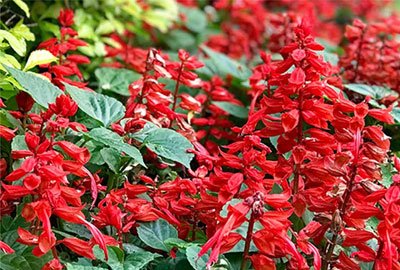


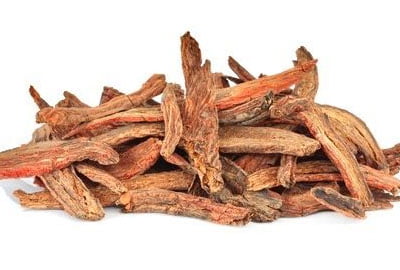


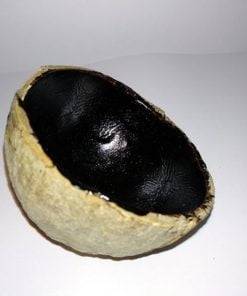

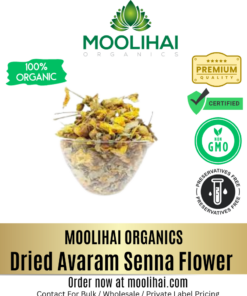

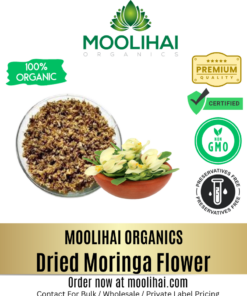


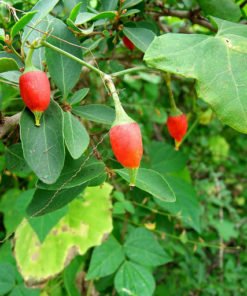
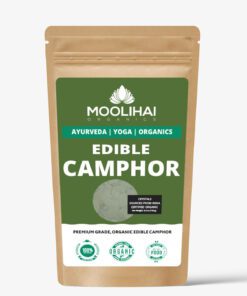

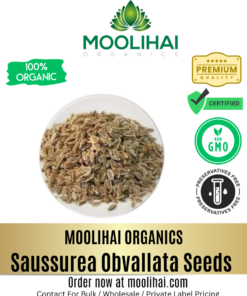



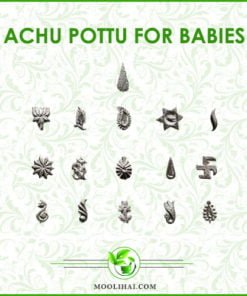
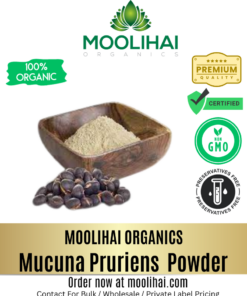



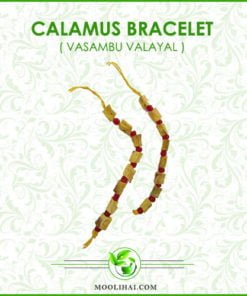

Terrific article